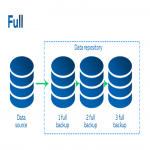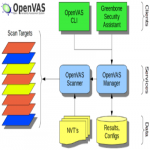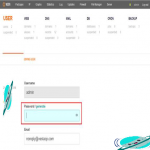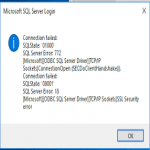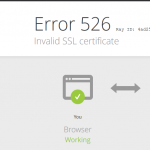Linux kernel 5.15 is the latest stable LTS kernel version and was released on Halloween, October 31 2021 by Linus Torvalds which brings some interesting new features, such as a new NTFS file system implementation that doesn't require you to rely on third-party software like NTFS-3G to fully manage your NTFS formatted external disk drives.
Here at Ibmi Media, as part of our Server Management Services, we regularly help our Customers to perform related Linux kernel installation queries.
In this context, we shall look into how to install Linux kernel 5.15 LTS.
NOTE: It is not recommended to install this kernel on production servers since it comes from an untrusted PPA. The safest bet is to continue using the kernel that came with your Ubuntu server.
The PPA is preferable for those who want to test out the new kernel and see how it performs in various hardware environments.
Other improvements provides by Linux kernel 5.15:
- New NTFS driver that replaces the previous one.
- Enhancements for CPU and GPUs ( Optimized C3 cache handling for AMD processors, temperature monitoring for AMD Zen3 based APUs, and support for Intel Lake Processor).
- Support for AMD RDNA2 Graphics card and Radeon 'Cyan Skillfish' Navi 1x APU.
- Improvements for XFS, BTRFS, and EXT4 filesystems.
- In-kernel SMB driver for file sharing.
- ARM board updates.
- Support for Apple M1 chip.
Steps to Install Linux Kernel 5.15 on Ubuntu 20.04
1. Perform System Update
First, make sure that all your system packages are up-to-date by running the following apt commands in the terminal:
$ sudo apt update
$ sudo apt upgrade2. Enable the TuxInvader PPA
Now you need to enable the TuxInvader PPA. This is a PPA that is built for LTS releases and allows users to install specific kernel versions.
The PPA provides Linux kernels 5.12.x and later versions. Source packages for the PPA are built using this container hosted on Docker hub.
To enable the TuxInvader repository, execute the command:
$ sudo add-apt-repository ppa:tuxinvader/lts-mainlinePress 'ENTER' when prompted to complete the addition of the repository. Once the repository is added, update the package lists to synchronize the system with the newly added repository:
$ sudo apt update3. Install Linux Kernel 5.15 LTS
From here, installing the Linux kernel 5.15 is a stringhtforward process. Simply run the command:
$ sudo apt install linux-generic-5.15 -yThe command installs a host of kernel packages , modules and Linux tools.
Now we open a terminal and run commands one by one to download and install the packages:
$ cd /tmp/
$ wget -c https://kernel.ubuntu.com/~kernel-ppa/mainline/v5.15/amd64/linux-headers-5.15.0-051500_5.15.0-051500.202110312130_all.deb
$ wget -c https://kernel.ubuntu.com/~kernel-ppa/mainline/v5.15/amd64/linux-headers-5.15.0-051500-generic_5.15.0-051500.202110312130_amd64.deb
$ wget -c https://kernel.ubuntu.com/~kernel-ppa/mainline/v5.15/amd64/linux-image-unsigned-5.15.0-051500-generic_5.15.0-051500.202110312130_amd64.deb
$ wget -c https://kernel.ubuntu.com/~kernel-ppa/mainline/v5.15/amd64/linux-modules-5.15.0-051500-generic_5.15.0-051500.202110312130_amd64.debNext, install a new kernel using the following command below:
$ sudo dpkg -i *.debOnce the installation is complete, reboot your Ubuntu system:
$ sudo rebootLog in once more and verify that you are now using the new LTS Linux kernel:
$ uname -rTo keep the new LTS kernel up to date, simply perform the basic system update and upgrade from time to time with the below command:
$ sudo apt update && sudo apt upgradeAlso, be sure to reboot once you have updated the kernel.
[Need help in installing any open-source Software ? We can help you. ]
Conclusion
This article covers how to install the Linux kernel 5.15 on Ubuntu 20.04 LTS Focal Fossa system. In fact, The Linux kernel is the main component of a Linux operating system (OS) and is the core interface between a computer's hardware and its processes.
How to check Updates for Kernel 5.15 ?
To keep your kernel 5.15 up to date, you will use the apt update and upgrade commands to pull updates from the PPA repository just like any other package on your Ubuntu system.
To check for updates and upgrade.
$ sudo apt update && sudo apt upgradeRemember, for any kernel updates, and you will need to reboot your system.
This article covers how to install the Linux kernel 5.15 on Ubuntu 20.04 LTS Focal Fossa system. In fact, The Linux kernel is the main component of a Linux operating system (OS) and is the core interface between a computer's hardware and its processes.
How to check Updates for Kernel 5.15 ?
To keep your kernel 5.15 up to date, you will use the apt update and upgrade commands to pull updates from the PPA repository just like any other package on your Ubuntu system.
To check for updates and upgrade.
$ sudo apt update && sudo apt upgradeRemember, for any kernel updates, and you will need to reboot your system.
